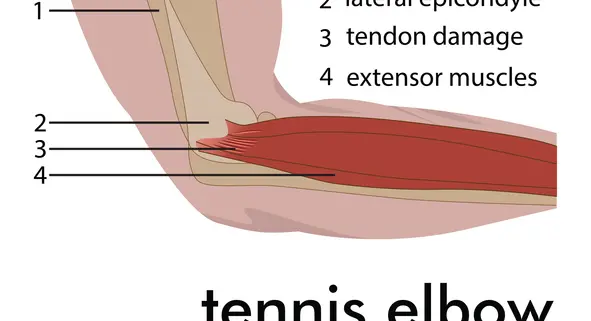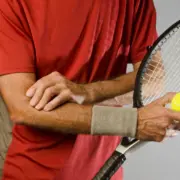How to Prevent Tennis Elbow
The elbow is one of the most regularly used joints in the body. It is located in the center of the arm, providing flexibility to the arm. The elbow is also prone to injury as a contact point for trauma and repetitive stress injuries. The elbow can easily be put under stress, as it is a major joint in one of the most active regions of the human body. It is often put under extreme pressure as the focal point of injury or trauma. Because it has fewer planes of movement than the wrist or the shoulder, it can be painful when twisted or hyperextended.
Some common ailments of the elbow include:
- Tennis elbow
- Golfer’s elbow
- Bursitis
- Arthritis
- Dislocation
- Fracture
- Infection
What is Tennis Elbow?
Tennis elbow (lateral epicondylitis) happens when the tendon attached to the bony, outside part of the elbow becomes inflamed/swollen. The tendon’s tissues may not only be inflamed, but can also be partially torn. It is a condition that affects hundreds of thousands of tennis players, as well as those who manage to sustain the same injury because of movements they perform at work, or in other sports.
Symptoms of Tennis Elbow:
· Sharp pain on the outside of the elbow
· Pain that radiates down the forearm (but not in all cases)
· Pain when you extend your wrist (bend it upward), shake hands or lift objects (including a comb or toothbrush in severe cases)
· Pain to the touch
· Loss of grip strength
Repetitive stress and overuse is the most common explanation for tennis elbow, based upon years of research and diagnoses. Sixty-five percent of tennis injuries like tennis elbow are classified as overuse/overload injuries and are traditionally overcome with the proper training, preparation, progression and movement pattern correction.
How to Prevent Tennis Elbow:
If you believe you’re suffering from tennis elbow:
- Rest from tennis or other repetitive elbow action for at least one week.
- Apply ice compress for 15-20 minutes, 3-4 times a day.
- Take aspirin, acetaminophen, ibuprofen or naproxen to reduce pain and inflammation.
- Use an elbow brace or wrap to redirect pressure away from the inflamed elbow.
- See a doctor if pain persists
If you think you may be suffering from symptoms of tennis elbow, call Colorado Center of Orthopaedic Excellence at (719) 623-1050 to request an appointment.



